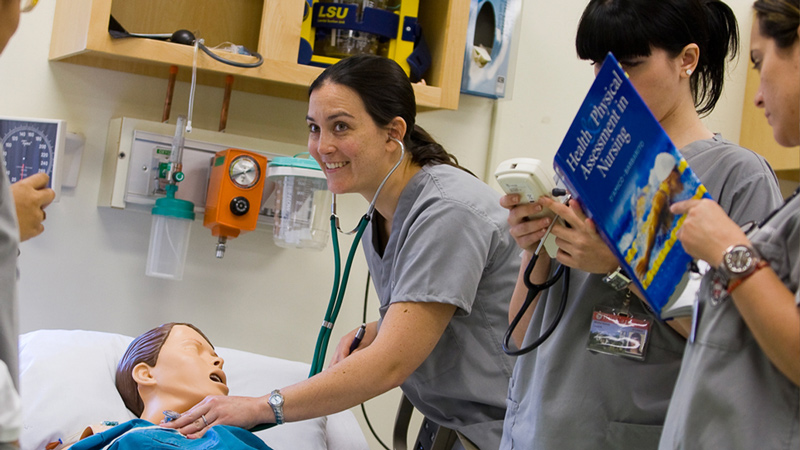The Barry University Comprehensive Emergency Management Plan (CEMP) is designed for use by the University community including the law school and off-site facilities. The CEMP outlines standard operating guidelines, based on University policies and procedures, for response to an emergency impacting Barry University. The CEMP describes the emergency management roles and responsibilities of the entire University community and provides a preparedness and response strategy for hazards. The CEMP is designed to protect lives, property and functions of the University through effective use of University, local, state, and federal resources. Since an emergency may be sudden and without warning, the CEMP is intended to be flexible in order to accommodate contingencies of various types and magnitudes. The Barry University CEMP does not limit the use of good judgment and common sense in matters not foreseen or covered by the elements of the plan.
Comprehensive Emergency Management Plan (CEMP)
Purpose
Scope
The Barry University CEMP is promulgated under the University President’s authority. All policies and procedures related to the safety and security of the University community shall be approved by the President's Cabinet. The CEMP outlines the prevention, mitigation, preparation, response and recovery actions of University personnel and resources for hazards that could negatively impact the University. The CEMP is guided by the National Incident Management System to facilitate interagency coordination between responding agencies and is consistent with the Miami-Dade County CEMP, State of Florida CEMP, and National Response Framework. The University continually collaborates with local, state, and federal emergency response agencies in the development, implementation, and maintenance of the University CEMP.
University personnel and equipment will be utilized in accordance with the guidelines set forth in the CEMP to accomplish the following priorities in order of importance:
- Priority 1: Protection of Human Life
- Priority 2: Support of Health, Safety and Basic Care Services
- Priority 3: Protection of Barry University Assets
- Priority 4: Maintenance of Critical Barry University Services
- Priority 5: Assessment of Damages
- Priority 6: Restoration of Barry University Operations
The University CEMP is comprised of three sections. The first section, contained within this document, is the BASIC PLAN which:
- Provides a plan overview,
- Specifies emergency management roles and responsibilities,
- Explains how the University prepares for and mitigates against likely hazards,
- Outlines the organizational structure of the University during an emergency, and
- Provides standard operating response guidelines.
The second section consists of HAZARD SPECIFIC PLANS (HSPs), which are maintained by and within related departments, units, cover special circumstances, and processes that are only relevant to a specific hazard. HSPs outline response and recovery protocols for specific hazards. Each HSP should cover the phases of emergency management: Preparation and Prevention, Detection and Analysis, Response (Containment or Eradication), Recovery and Mitigation, Post Incident and Continuity. All HSPs are developed with federal guidelines or SOPs, state and local guidelines, insurance compliance, institutional guidelines, contractual vendors, and departmental functions in consideration.
Through appendixes, this plan addresses several specific types of hazards providing guidelines for the response, stabilization and recovery from a specific event. Hazards include:
- Active Shooter
- Infectious Disease
- Institutional Fire
- Natural Disaster & Food
- Cyber Security (Data Security Incident Response Program)
- Hurricane Lab Preparations
- Bio-Hazard plans for emergency
- Suspicious Package (Mailroom)
- Key and Card Access
- Comprehensive Document Retention Policy
The third section contains UNIT SPECIFIC EMERGENCY OPERATIONS PLANS which outline how operational units will apply the implementation of guidelines set forth in the BASIC PLAN for specific hazards. Examples of Barry University operational units include. Facilities Management, Housing & Residence Life, and Public Safety.
Unit specific emergency operational planning is vital for the University to effectively respond to and recover from emergency events. All University units are required to have Unit Specific and Continuity of Operations Plans. All units are required to review and revise their plans at least once a year. At a minimum, all plans must address the following items:
- Preparing for emergency events; identifying and stocking emergency supplies etc.
- Evacuating and sheltering-in-place procedures in an emergency and for response to fires, bomb threats, chemical spills, hurricanes, etc.;
- Assessing damage to facilities and equipment and resources; and
- Activating continuity of operations plans and performing mission essential functions either at the primary or an alternate site.
Assumptions
The University CEMP is predicated on a realistic approach to the challenges likely to be encountered during an emergency. Hence, the following assumptions are made and should be used as general guidelines in such an event:
- An emergency may occur at any time of the day or night, weekend, or holiday, with little or no warning.
- The succession of events in an emergency is not predictable. Therefore, published response plans such as the University CEMP, should serve only as a guide and may require modifications in order to meet the requirements of a specific emergency.
- An emergency may be declared if information indicates that such conditions are developing or probable.
- All emergencies begin locally. Therefore, most emergencies impacting the University will begin at the campus level.
- Major emergencies may become county or statewide. Therefore, it is necessary for the University to prepare for and carry out emergency response and short-term recovery operations in conjunction with local, state, and federal emergency response agencies.
- Assistance from local, state, and federal emergency response agencies may not be immediately available.
Authority
The authorization from the University Board of Trustees to the University President to prepare, maintain, and implement the CEMP can be found in the Bylaws of the University Article II, Section 1; Specific Powers.
Miami-Dade County emergency management authority and support are governed by Chapter 8B of the Miami-Dade County Code. The State of Florida emergency management authority and support are governed by Florida Statute, Chapter 252. The federal government is authorized to support both the county and state governments in accordance with the Robert T. Stafford Act and Title 44 of the Code of Federal Regulation.




















